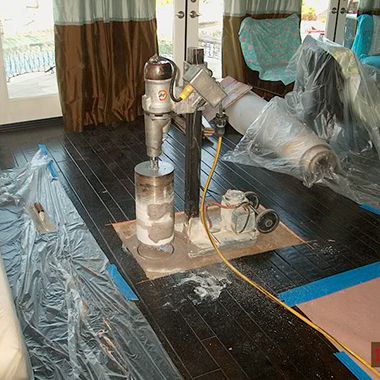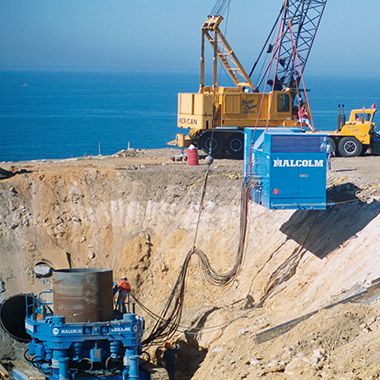The Rancho Palos Verdes Storm Drain Outfall project was a major earthworks project located off Hawthorne Ave and Palos Verdes Drive, at the high seacliff adjacent to the Pt. Vicente USCG Station and a part of a very upscale clifftop development. The subject work was to accommodate regional stormdrain flow – outletting it safely though the cliff into the ocean.
The storm drain main line for the region was 10’ in diameter. The project extended the storm drain to the sea by passing it through the casing at a 45⁰ angle through to a plane intersecting the toe of the cliff. This casing was met by a simultaneously dug, conventionally excavated tunnel extending from near the toe of the cliff. The design and construction of the facility included slant drilling a 15’ diameter steel casing, advanced segmentally, through the cliff. Due to the specific challenge derived from such a design, a 1.5 – 2 million foot-pound capacity drill rig was brought in from Italy to complete the drilling. The rig was socketed into the sea cliff by a set of caissons directionally drilled into the cliff face. Despite highly aggressive conditions, and hard and deformed bedrock which was highly variable, the two tunneling operations met perfectly. Additionally, a concrete apron was needed as an outfall to carry the stormwater safely across the beach into the ocean. The outfall structure required special design and construction to accommodate wave attack, storm surges, erosion, and corrosion. All equipment and materials beachside had to be brought in by clifftop 300-ton crane or by boat.
This project was held to the highest degree of scrutiny by the city of Rancho Palos Verdes. Several scientists from the Scripps Institute of Oceanography and local universities were brought in to review and comment on our work. We were able to demonstrate to them that the sea cliff would be able to withstand the stress induced by the addition of the drill rig during project implementation and that the 300-450 ton cranes would not overload the edge of the seacliff.
Using the G3 method, we were able to complete the drilling and pipeline installation project without damaging the cliff, without latent leakage effects, and has shown exemplary performance during several major storms following its construction.







